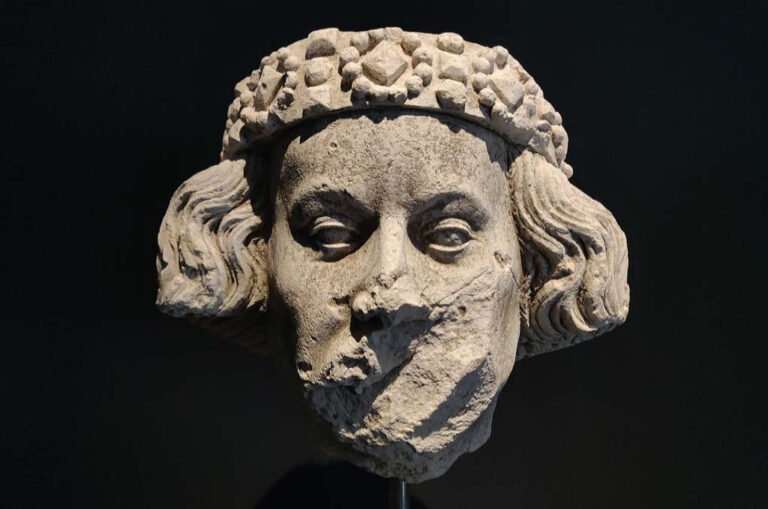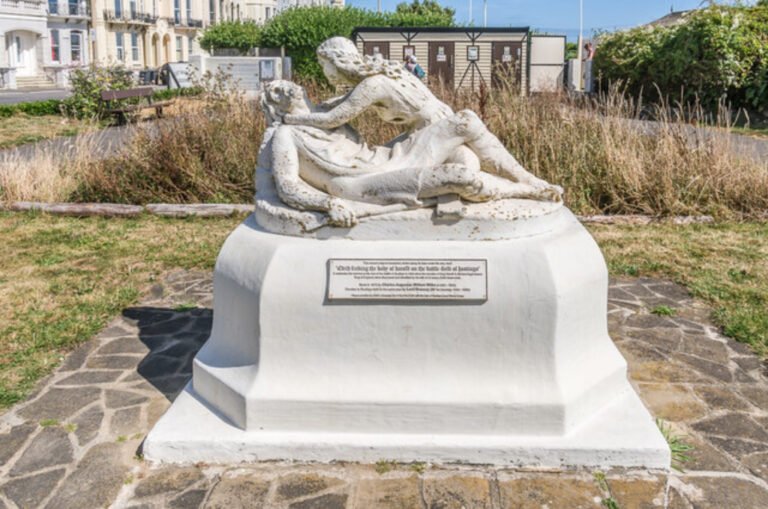Although Augustine of Canterbury may not be broadly recognized, his impact on Christianity and British history is obvious. Augustine, frequently referred to as “the Apostle to the English,” paved the way for the Christianization of Anglo-Saxon Britain during his mission to Britain in the late 6th century. His experiences, challenges, and triumphs not only impacted the devout environment of the British Isles but also created an enduring social impact that still resonates nowadays.
Who was Augustine of Canterbury and why does his story stay important after more than 1,400 years?
Who Was Augustine of Canterbury?
Born in the early 6th century, Augustine was a monk in Rome, living a calm, monastic life when his fate took a sharp turn. He served as the earlier of a monastery, where he gained a reputation for his devoutness and leadership. His life took a monumental shift when Pope Gregory the Great selected him for a mission that would change the course of British history.
Augustine’s connection with Pope Gregory wasn’t just a stroke of luck. Gregory had a deep interest in spreading Christianity to the distant lands of Europe, and Augustine, with his reputation for piety, seemed the perfect man for the job. Thus began the great mission to Britain.
The Mission to Britain
In the late 6th century, Britain was a largely pagan land, though remnants of Christianity remained from the Roman era. Pope Gregory saw an opportunity to re-establish Christianity in this distant land and chose Augustine to lead a delegation of about 40 monks.
The mission was an overwhelming one. Augustine and his companions set off on a dangerous journey from Rome, traveling through France before at last crossing the English Channel. Their mission? To convert the Anglo-Saxon kingdoms to Christianity and join together them under the Church.
Augustine’s Arrival in England
In 597 AD, Augustine came to Kent and was greeted by Ruler Æthelberht of Kent. In spite of his being a pagan, Æthelberht was wedded to Ruler Bertha, who was a Christian Frankish princess. Queen Bertha’s influence played a crucial role in Augustine’s ability to approach the king. She had already established a small Christian community, which made Augustine’s arrival slightly less daunting.
King Æthelberht, while skeptical at first, agreed to meet Augustine and his delegation. According to tradition, they met in the open air, so the king wouldn’t be subject to any sorcery or tricks. Impressed by Augustine’s sincerity and message, Æthelberht allowed him to preach in his kingdom and even offered him his residence in Canterbury.
Augustine’s Conversion Efforts
Converting a pagan society was no easy task. Augustine faced immense challenges, not just from the local population but from remnants of the Celtic Church and pagan traditions that clashed with his Roman Christianity. Yet, Augustine was undeterred. His method was gradual and diplomatic—rather than forcing conversions, he used persuasion and built alliances.
One of the key milestones in his mission was the baptism of King Æthelberht, which marked a turning point for Christianity in England. Æthelberht’s conversion led many of his subjects to follow suit, setting in motion a broader Christianization of the kingdom.
The Establishment of the Church in Canterbury
Canterbury rapidly became the center of Augustine’s endeavors. He at first built up a church at St. Martin’s, the oldest church in Britain still in use. From here, Augustine extended his mission, laying the establishment for what would become Canterbury Cathedral.

It wasn’t long ago Augustine’s endeavors driven to the formation of the Archbishopric of Canterbury. In 601 AD, Pope Gregory officially named Augustine as the first Archbishop of Canterbury, a role that would have an immense impact on British Christianity for centuries to come.
The Creation of the Archbishopric of Canterbury
As the first Archbishop of Canterbury, Augustine had a monumental task: creating a structured, organized Church in England. He was given the authority to establish dioceses and appoint bishops. This solidified Canterbury’s role as the spiritual center of Christianity in England, a position it holds to this day.
Augustine’s leadership was pivotal in uniting various factions of the Church, though his relationship with the Celtic Church remained tense. Despite the conflicts, his diplomatic approach enabled the gradual assimilation of various Christian traditions under the Roman Church.
Conflicts and Controversies
Augustine’s mission wasn’t without its share of conflicts. One of the most significant was his struggle to reconcile Roman Christianity with the Celtic traditions practiced by British Christians. The two groups clashed over liturgical practices, such as the calculation of Easter and ecclesiastical hierarchy. Augustine attempted to mediate these differences, but full unity wouldn’t be achieved until years after his death.
Moreover, Augustine faced challenges from local pagan traditions, which were deeply rooted in Anglo-Saxon society. Yet, his patience and ability to adapt his message to local customs allowed him to overcome many of these obstacles.
Augustine’s Legacy in England
Augustine’s legacy in Britain is immense. He laid the foundation for the Christianization of the Anglo-Saxons and set up Canterbury as the heart of the English Church. His victory set the stage for future missionaries and church leaders, numerous of whom followed in his footsteps.
Canterbury became not just a devout center, but a symbol of Augustine’s enduring impact. It remains a major pilgrimage location, drawing thousands of visitors each year, numerous of whom come to pay homage to the man who brought Christianity to Britain.
Augustine’s Canonization
Augustine’s contributions didn’t go unnoticed by the Church. He was canonized as a holy person, and his feast day is celebrated on May 26th. His sainthood is recognized by both the Roman Catholic and Anglican Churches, highlighting his widespread significance in Christian history.
The Augustine Cross
One of the enduring symbols of Augustine’s mission is the Augustine Cross. This cross, used in various iconography, represents Augustine’s faith, perseverance, and the challenges he overcame. It’s a symbol not just of Augustine’s mission but of the spread of Christianity throughout England.

Lessons from Augustine’s Life
What can modern Christians learn from Augustine? His life offers valuable lessons in patience, diplomacy, and faith. Augustine didn’t force conversions or impose his beliefs. Instead, he worked within the existing structures of society, using persuasion and alliance-building to achieve his goals.
Augustine’s Influence on British Culture
Beyond religion, Augustine’s mission had a lasting impact on British culture. He played a pivotal role in shaping British religious identity and influencing its social structures. His work laid the groundwork for the future religious and cultural unity of the country.
Augustine in Modern Popular Culture
Augustine’s story continues to be told in literature, art, and media. His life and mission have inspired countless depictions, emphasizing his role as a pioneer of faith. His journey from a quiet monk in Rome to the “Apostle to the English” resonates with people across generations.
Conclusion
Augustine of Canterbury’s mission to Britain changed the course of history. His diplomatic approach, undaunted faith, and assurance helped to establish Christianity in Britain, creating a legacy that endures to this day. As the first Archbishop of Canterbury, he set the establishment of the Christian Church in Britain, and his impact continues to be felt, both in devout and cultural settings.








